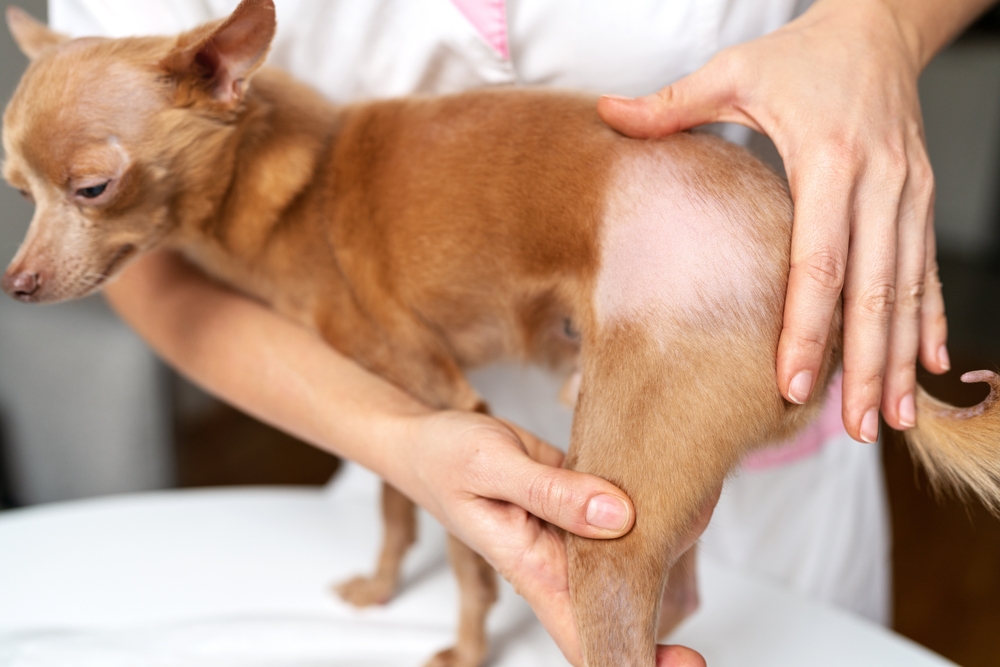Why Is My Dog Losing Hair? Understanding Alopecia in Dogs
Have you heard of alopecia in dogs? Probably not. If you have a dog, chances are you’ve seen hair in multiple places around the house. Shedding is a natural process for dogs—especially for certain breeds. In fact, most dogs will shed their seasonal coats twice during the year.
But, sometimes changes in things like temperature, environment, or even nutrition can lead to a little bit more shedding. Wondering why your dog is losing hair is not something that should take up a lot of your time. If you’re concerned, it might be another issue—like alopecia—at play.

Understanding Alopecia in Dogs
Alopecia in dogs is a condition that causes the body to attack its own hair follicles. This makes more hairs fall out, and also prevents new hair from growing to replace it. Alopecia can affect certain spots, or the whole body, and might lead the skin to be very itchy.
Some dogs with alopecia only have it for a short time, while others will always have to deal with it. Alopecia is not life-threatening, but it can be uncomfortable. It’s essential to work with your vet if your dog has alopecia to try to find the best solution for him or her.
Recognizing Alopecia in Dogs
While various health issues can affect your dog’s coat, there are telltale signs that he might be dealing with alopecia. These include:
- Excessive shedding either in small patches or all over the body
- Repetitive scratching
- Repetitive licking
- Significant hair loss around the legs or sides
- Changes to skin color
- Redness
- Inflammation
- Red spots
If you notice any of the above symptoms, it’s important to schedule a visit with your veterinarian to determine if alopecia is the root cause. Sometimes treating alopecia can make it disappear forever. Even if it returns, your vet can help to make sure to make it as comfortable as possible for your dog.
Developing Alopecia in Dogs
Many different environmental or hormonal factors could contribute to a dog’s risk for developing alopecia. These include:
- Parasites like fleas, ticks, or mosquitos
- A bite or sting from a spider or other insect
- Allergies
- Poor nutrition
- A dirty or hot, humid environment
- Endocrine diseases
- Reactions to certain medications
- Certain weather
- Bacterial, yeast, or fungal infections
- Genetics
Working with your veterinary team can help you determine how your dog developed alopecia, and the best way to treat her.
Treating Alopecia in Dogs
Based on the kind of alopecia your dog has, your veterinarian can find a treatment to relieve skin issues that are causing discomfort. Please note, keeping up with monthly parasite prevention is a good way to avoid certain kinds of alopecia in dogs before they even develop. The vet might also suggest changing your pet’s food or avoiding certain food allergens. If necessary, they can provide medication that can help prevent the alopecia from coming back.
If your pet is suffering from severe skin injuries, the dermatology and allergy team at Oakland Veterinary Referral Services is here to help. To learn more or to schedule an appointment, please call (248) 334-6877.


